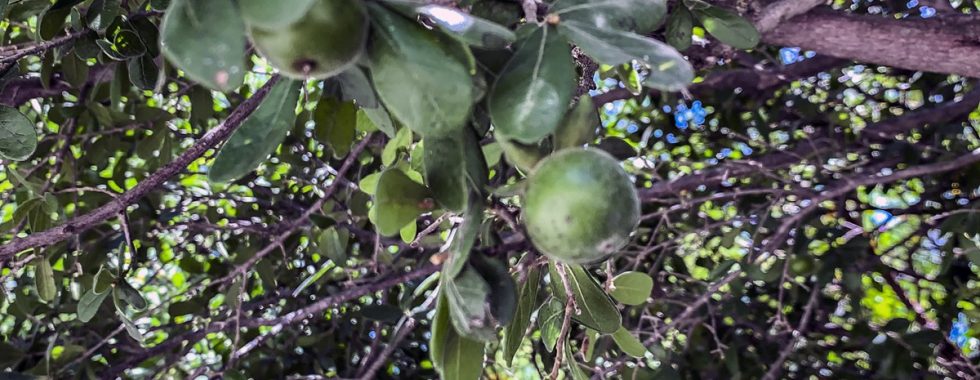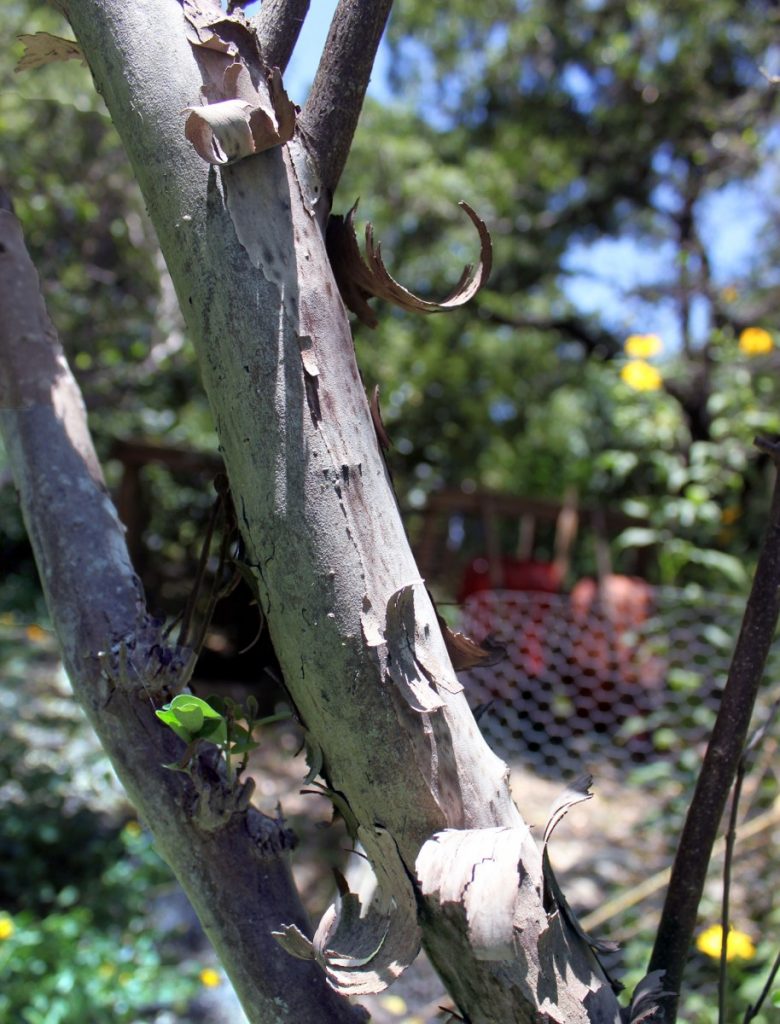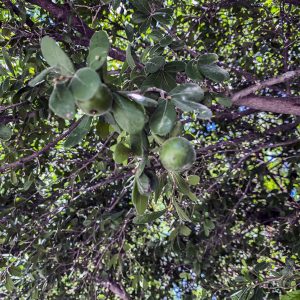For the Love of Trees: Texas Black Persimmon (Diospyros texana)
I can spot a Diospyros texana from every window of my San Marcos home. They are simply a part of the landscape, so much so that I could easily take them a bit for granted. Perhaps the same is true for you, but let’s see if we might discover something together to make this native shrub or small tree stand out on its own.
The Texas Black Persimmon is very common in the Edwards Plateau area and the wild areas in and just around Austin. It can also be spotted into northern Mexico and throughout Central and West Texas.
When found in the understory of Cedar Elms and Live Oaks it appears as a shrub but out on its own, it takes on more tree-like qualities. Whatever the shape it is certainly slow growing. The bark peels throughout the year, revealing a range of shades from grey to white to pink. The Texas Black Persimmon can’t be matched for its drought tolerance and ability to withstand the long, dry hot summers of this region. It has few requirements of its soil and can adapt to full sun or shade.
Similar to that of eastern persimmon (Diospyros virginiana), its small black fruit is attractive to both wildlife and humans. The primary difference is that the Texas persimmon is much darker and even more astringent and acidic than its eastern relative. If it’s the fruit you are seeking you will want to be sure you’ve chosen a female tree to plant.
Medicinally the fruit of the Texas Black Persimmon is documented as being used by the Cherokee. It’s the astringent quality that makes the fruit of this tree of particular interest. What we know today is that an astringent substance, whether it be from a plant or chemical, causes a shrinking or constriction of body tissues. Take one bite of an unripe black persimmon and you can experience this for yourself as your mouth will immediately pucker from the tannins. It is these astringent qualities that made the fruit an excellent resource to resolve inflammatory sores in the mouth and throat, as well as hemorrhoids.
Other uses of this plant include creating a black dye from the fruit. The very hard wood was used for tool making and engraving.
So what do you think? Perhaps this commonly found native deserves a bit more of our attention, particularly in the months ahead as you keep watch for its ripening fruit.
Written by Lauren Hubele, an author and educator whose practice provides a framework for resolving chronic and acute conditions using gemmotherapy, homeopathy, and a plant-based diet.
** Note: Lauren will be going on hiatus for the summer in order to complete another writing project.




